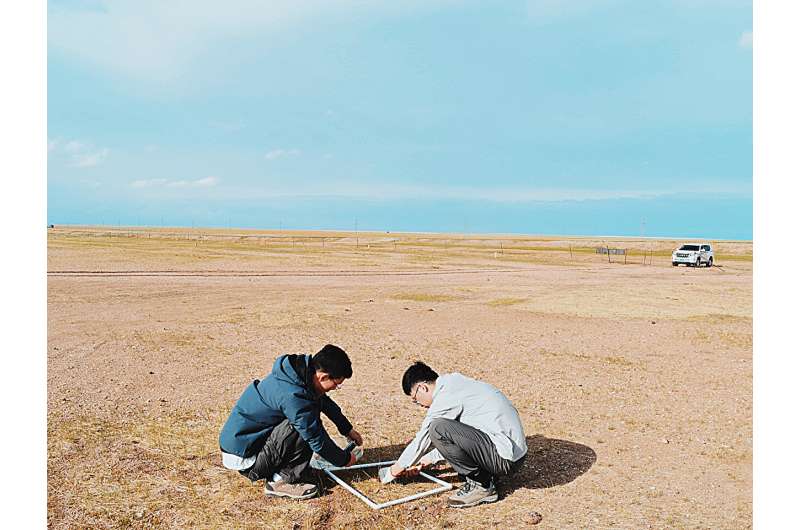This article has been reviewed according to Science X's editorial process and policies. Editors have highlighted the following attributes while ensuring the content's credibility:
fact-checked
trusted source
proofread
New model sheds light on grassland desertification dynamics

In a study published in Remote Sensing, scientists from the Aerospace Information Research Institute (AIR) of the Chinese Academy of Sciences (CAS) have employed a Desertification Difference Index (DDI) model to better understand and combat global grassland desertification.
The study focused on extracting desertification information using albedo-EVI in Xilingol, north China's Inner Mongolia Autonomous Region, offering insights into the spatial and temporal dynamics of desertified grasslands (DGLs).
Spatially, Xilingol's DGL displayed a zonal distribution, while temporally, the degree of desertification decreased significantly. Severely and moderately desertified areas reduced from 51.77% in 2000 to 37.23% in 2020, showing a positive trend. Concurrently, non-desertified and healthy areas increased from 17.85% in 2000 to 37.40% in 2020, underscoring the importance of comprehending conversion patterns among different desertification levels.
Transition intensities among various desertification levels were more pronounced during 2000–2012 but stabilized during 2012–2020, showing signs of optimism for the implementation of sustainable management practices.
In addition, this study identified meteorological factors and soil conditions as primary drivers of DDI spatial distribution. Evapotranspiration emerged as the most influential factor, underscoring the critical role of natural processes. Notably, human activities were found to dominate interannual DDI variations, emphasizing the need for comprehensive prevention and control measures.
The study offers insights into the intricate interplay of natural and anthropogenic factors contributing to grassland desertification. It provides valuable clues for targeted strategies to combat grassland desertification by unraveling the complexities of conversion patterns and identifying the driving forces in both spatial and temporal dimensions.
More information: Jingbo Li et al, A 20-Year Analysis of the Dynamics and Driving Factors of Grassland Desertification in Xilingol, China, Remote Sensing (2023). DOI: 10.3390/rs15245716
Provided by Chinese Academy of Sciences




















